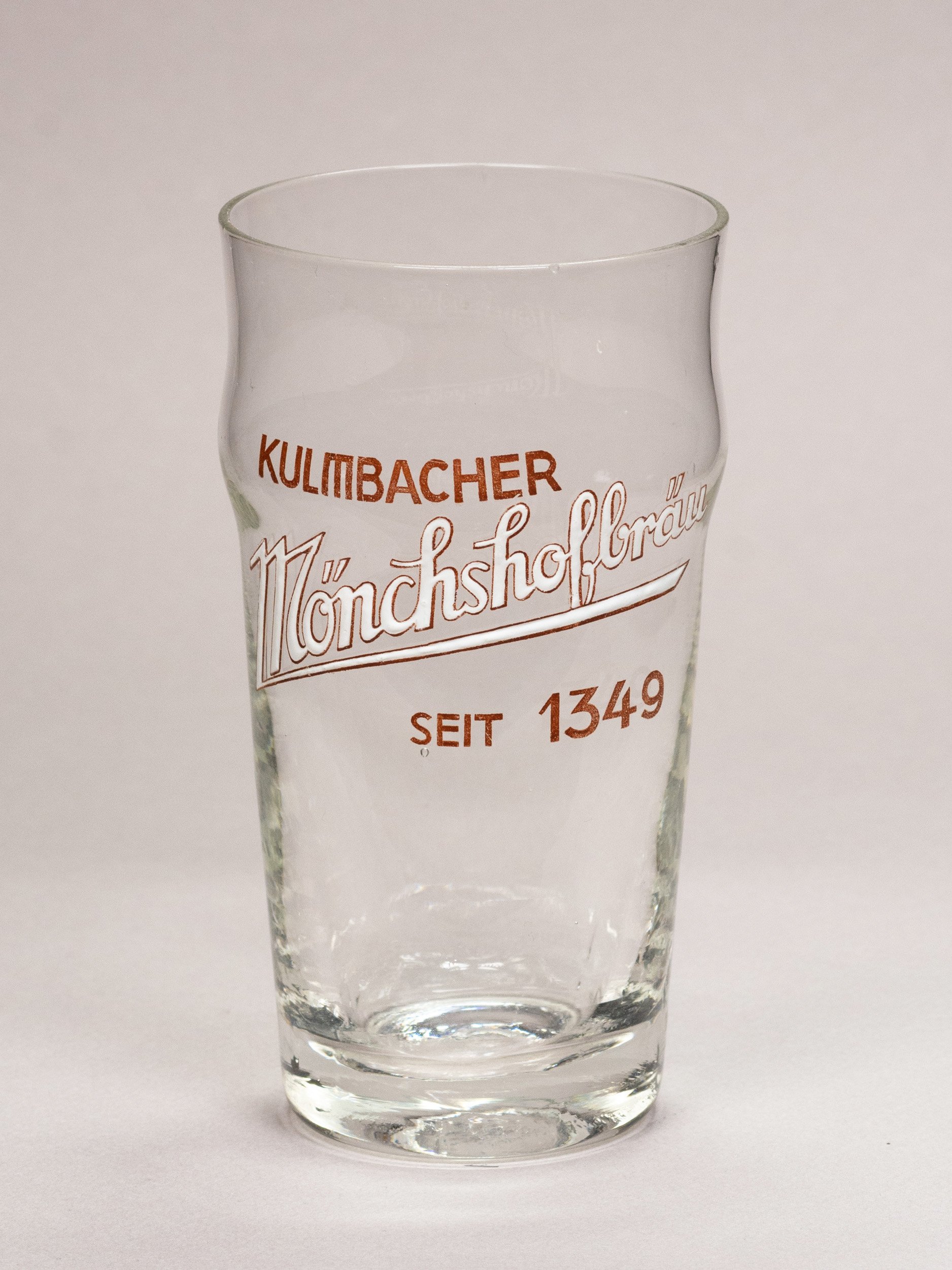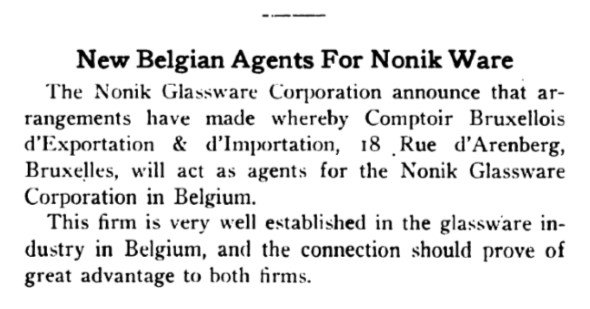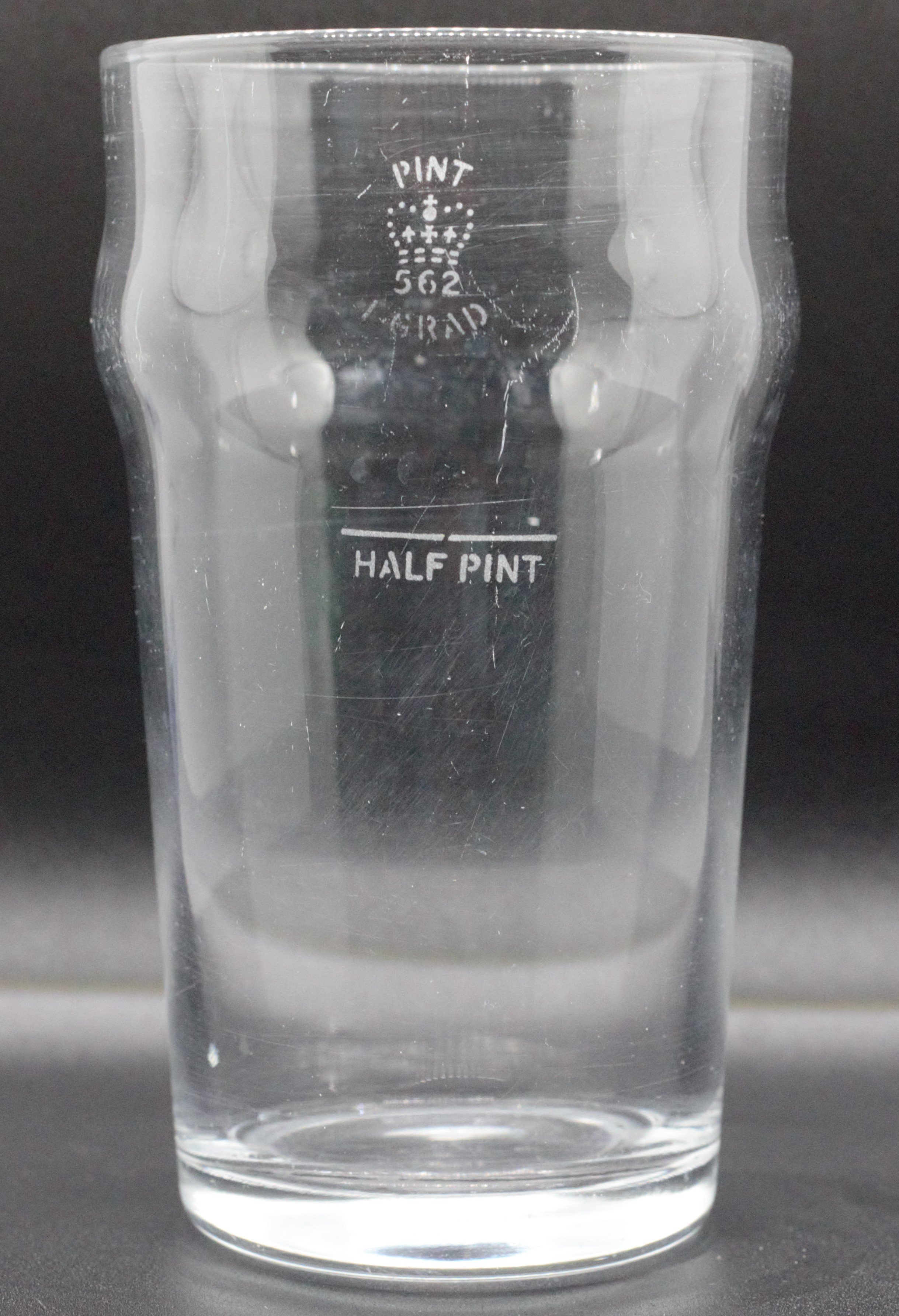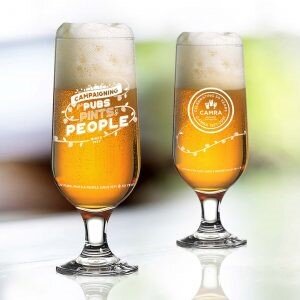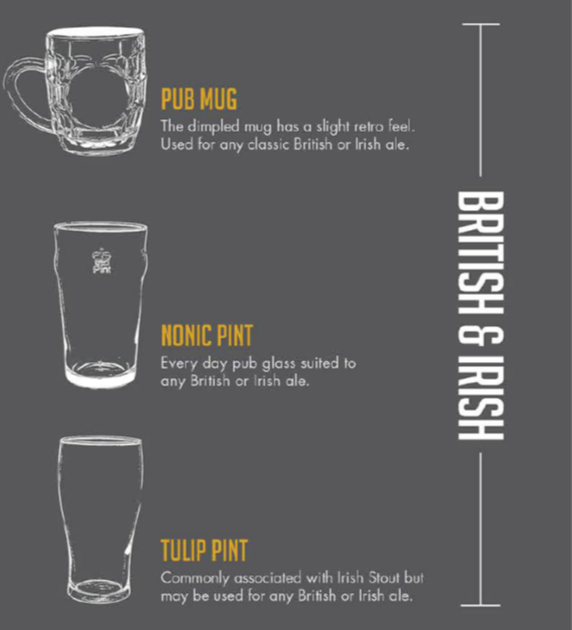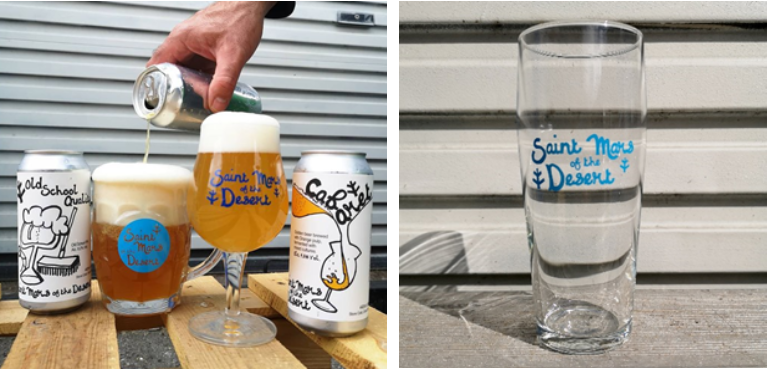In a 2020 post about the nonik glass (or nonic, if you prefer), I noted its origins in the US with a blip in Germany, before it made its way to the UK. However, a reader recently passed along several Continental examples of the nonik from before its British heyday, and it led me to discover some other interesting pieces of information.
Cyril Pagniez shared several photos of nonik glasses from Germany, Belgium and France, which he notes are circa the 1930s. Cyril is a tegestologist in France with the webpage patersbier.net. He is also the communications and media manager for Brassicol', which is a breweriana club.
Cyril was kind enough to allow me to share the images here. All glassware photos in this post are courtesy of him with one exception.
Nonik glasses by French breweries c.1930s. Images courtesy of Cyril Pagniez.
Nonik glasses by Belgian breweries c.1930s. Images courtesy of Cyril Pagniez.
In my earlier post, I included this listing in a 1934 German glassware catalog. It identifies the glass as “Wulstrandbecher”. At least one brewery, Kulmbacher, used the glass. With a little more digging, I found news touting arrangements to sell Nonik Glassware in Belgium by Comptoir Bruxellois d'Exportation & d'Importation.
The nonik (on the right) as depicted in a 1934 catalog for the German glass company August Walther & Sohne AG (found online here). The glass is identified as “Wulstrandbecher”, which translates to bulb edge cup.
Kulmbacher nonik glass c.1930s. Image courtesy of Cyril Pagniez.
News posted in the November 17, 1921 edition of the Crockery and Glass Journal indicating products by the American company Nonik Glassware were to be sold in Belgium. (Retrieved from Google Books.)
Similarly, the below news clip indicates the nonik being distributed in England around the same time. However, consistent with what has been discovered with it’s early 20th century history in the US, it appears the target audience was soda fountains and not pubs.
News posted in the November 3, 1921 edition of the Crockery and Glass Journal indicating products by the American company Nonik Glassware were to be sold in England. (Retrieved from Google Books.)
The glass never took off on the Continent, and it wasn’t until Ravenhead and Dema began producing them domestically beginning in the late 1940s that the glass became ubiquitous in UK pubs for a time. (It is no longer as popular as it once was in England. Read more about modern British drinkware here.)
Speaking of British beer glasses, according to Boris Johnson, 2022 will bring back the crown stamp as a result of Brexit. Maybe.
For background, the crown stamp adorned drinkware in British pubs beginning in 1699 to ensure consumers were given a proper pint (or half pint). This started to be replaced by the CE mark (conformité européenne, or European conformity) in 2006.
Example of a nonik glass with a crown stamp. Personal collection.
Though the crown stamp was not prohibited, overseas manufacturers had little incentive to differentiate products for the British market. And the manufacturers were overseas as all major British ones had closed down by that point.
I always appreciated the stamp as a unique cultural feature, but this is not a good thing. And if the Tory government is hailing this minute issue as a great success due to Brexit, well, that’s just sad. But also hilarious since they want their traditional English stamp on a pint of mass-produced continental lager, which is overwhelmingly what most folks in Britain drink. Perhaps this glass, a kind of hybrid nonik/Pilsner glass would be most fitting.
A Pilsner-esque nonik glass. Image courtesy of Cyril Pagniez.
And who’s going to make these? I doubt the financials support the widespread production of new pint glasses with the crown stamp. In all likelihood, the CE mark will continue to be the norm.




